Recipe: Original Sifnos Chickpea Stew (Revithada) in a...
The signature dish of the island...
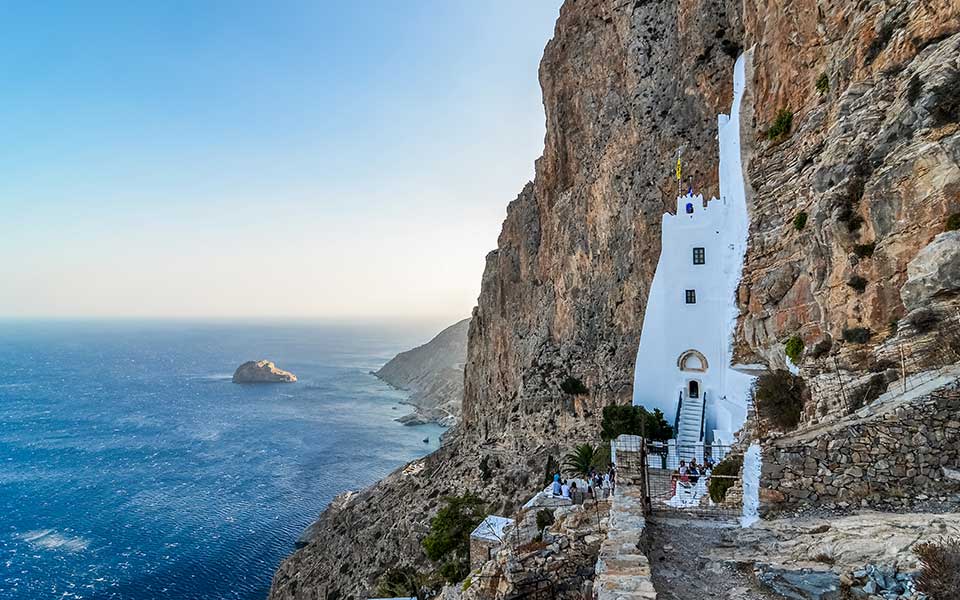
Panaghia Hozoviotissa, Amorgos
© Shutterstock
Apart from myriad attractions of Greece’s islands, among the most-photographed (and thus today Instagrammed) are their one-of-a-kind churches.
Despite their modest size, these structures captivate with their simple yet poignant architecture, the centuries of turbulent history written in to their very fabric, their dazzling white color contrasting with the blue of the sea and sky. And, above all, with their location – whether that is perched on a mountain top, or clinging to a seaside cliff.
Below is a just small selection of some of Greece’s most remarkable island churches. There are, of course, many more to discover.
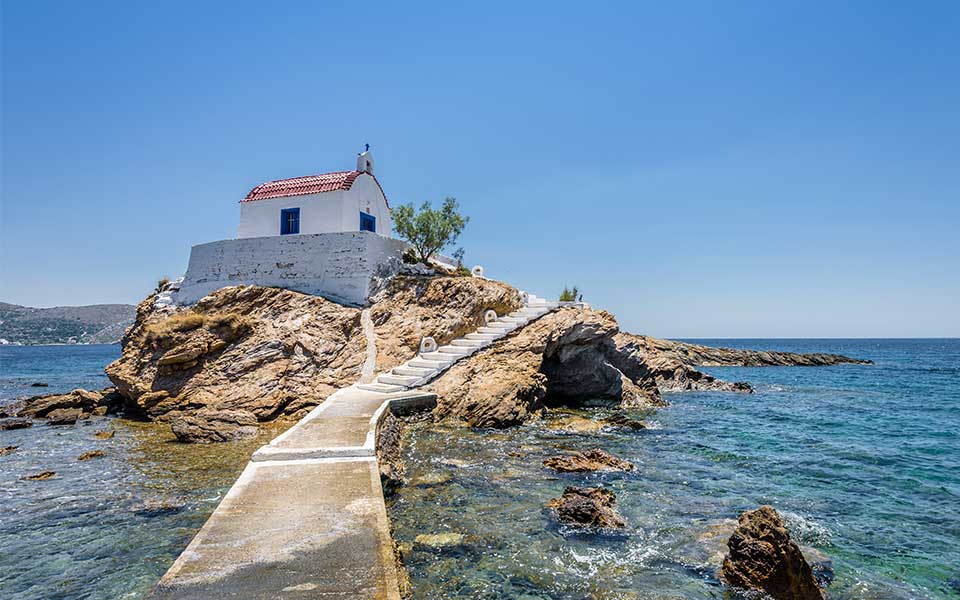
Aghios Isidoros, Leros
© Shutterstock
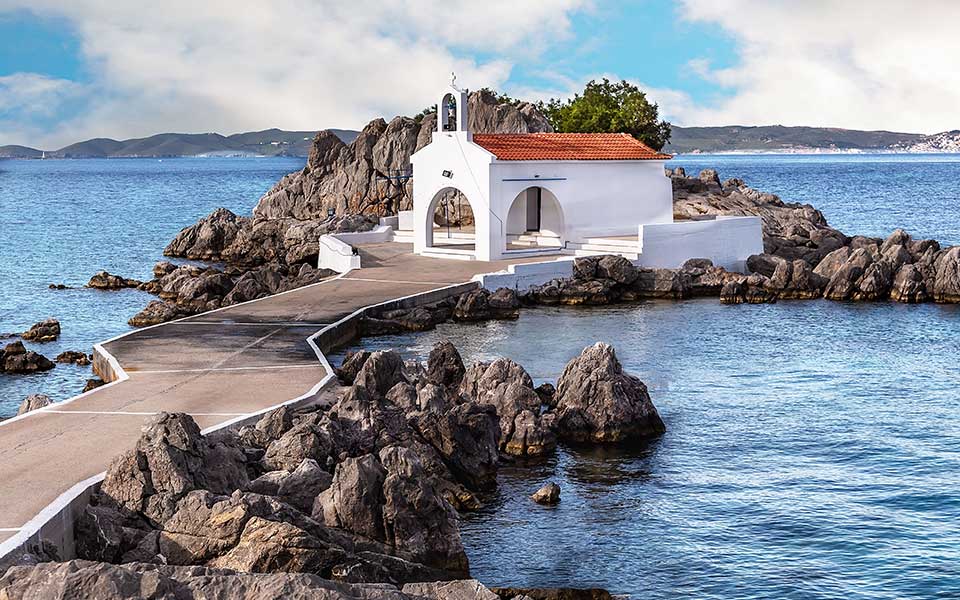
Aghios Isidoros, Chios
© Shutterstock
Saint Isidore, who died a martyr on the Northern Aegean island of Chios, is a patron saint of the island, with numerous churches dedicated to him. One of these lends a special note of elegance to the tiny islet it tops, just a few meters from the coast of the village of Pantoukious. The saint is equally revered on Leros, in the Dodecanese, where a 14th-century chapel named after him on an islet off the beach of Merikia in Kokkali Bay, has become a popular summer wedding and baptism destination.
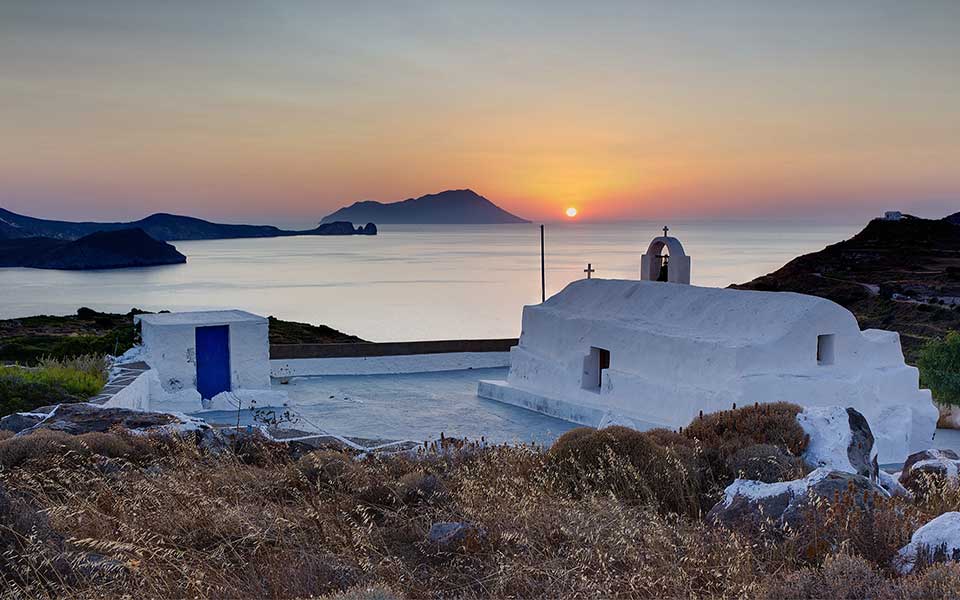
Panaghia Tourliani, Milos
© Shutterstock
There is much to see and admire at this church on the Cycladic island of Milos, which is dedicated to the Virgin Mary. Plan your excursion to Klimatovouni, a hill above the area of Klima, for lateish afternoon so that, after examining the church’s very old icons, you can sit on the short stone wall of the courtyards to enjoy the sight of the sun setting in all its colorful glory over the bay of Adamantas.
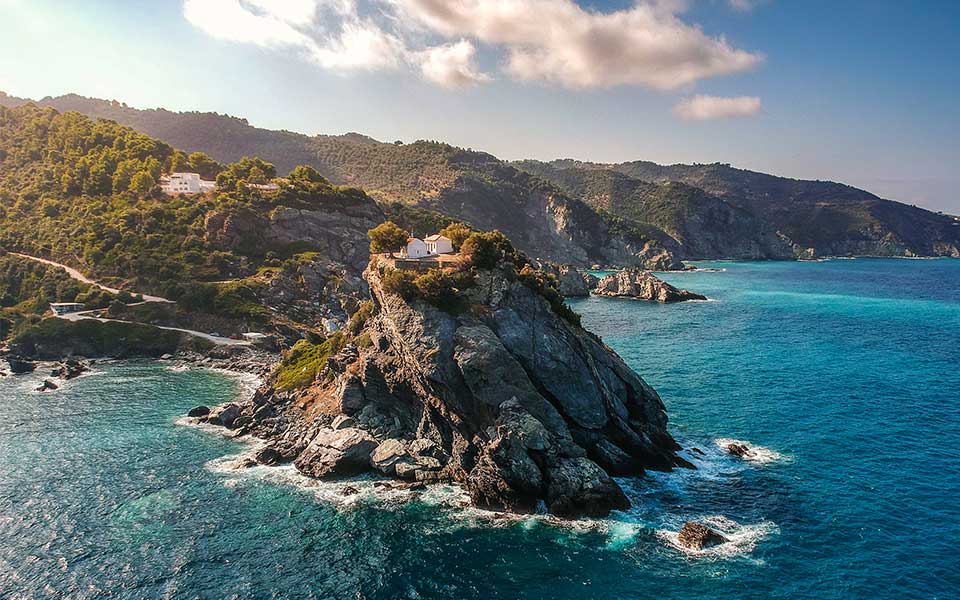
Aghios Ioannis, Skopelos
© Shutterstock
It is not enough to have seen it in Mamma Mia!, the hit musical that was filmed on this island of the Sporades in the Aegean, the perfect setting for silver-screen nuptials. Perched atop a 100-meter rock, visiting the Church of Aghios Ioannis in the fairytale village of Kastri is an experience in its own right, a climb of 160 steps carved into the rock to reach a perfect little church with a perfect Aegean view.
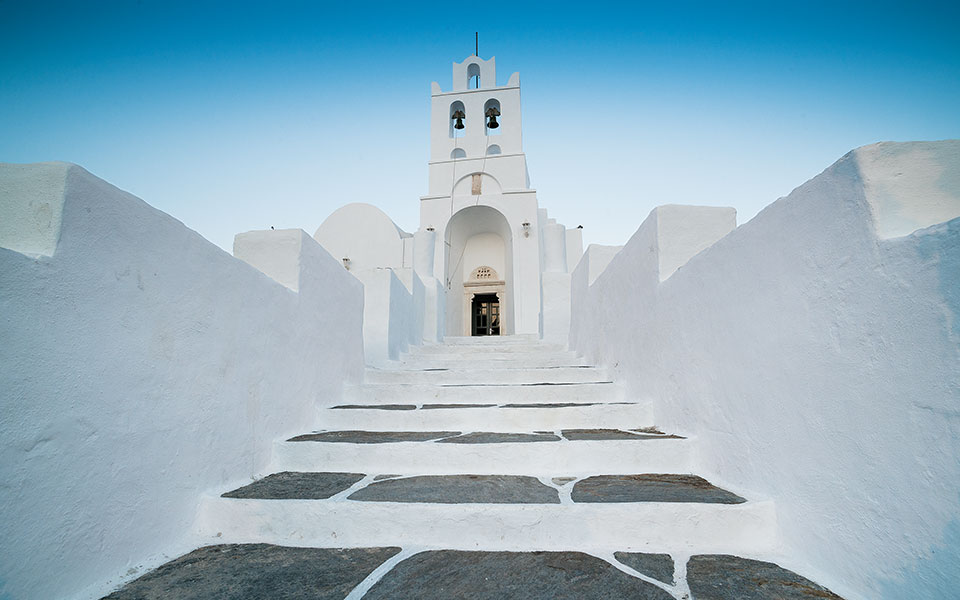
Panaghia Chrysopigi, Sifnos
© Giannis Giannelos
Panaghia Chrysopigi on Sifnos in the central Aegean is impressive for the fact that it was built in 1615 as a home to an icon of Zoodochos Pigi (the life-giving spring, that is the Virgin Mary) that was salvaged from the sea by fishermen. Another important reason to visit, though, is the breathtaking view as you walk down to the tip of the promontory where the former monastery sits, sparkling white, with a small bell tower and the onetime cells of nuns.
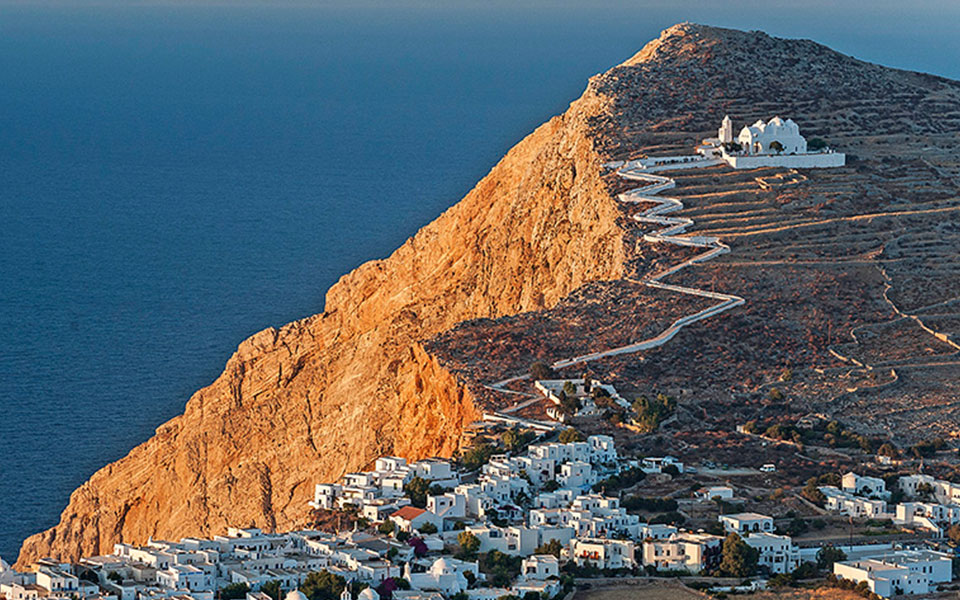
Koimisi tis Theotokou, Folegandros
© Giannis Giannelos
Built into the side of a steep hillside overlooking the main town of Folegandros in the Cyclades with materials salvaged from an ancient temple, the shimmering church dedicated to the Dormition of the Virgin is renowned for its icon of the mother of Christ, which was brought over from Constantinople and is said to work miracles. According to the local custom, May 1 is not just Labor Day here, but also marks another milestone in the island’s history: a day in 1790 when the locals appealed to the Virgin for help and she sank an incoming fleet of 14 Algerian pirate ships.
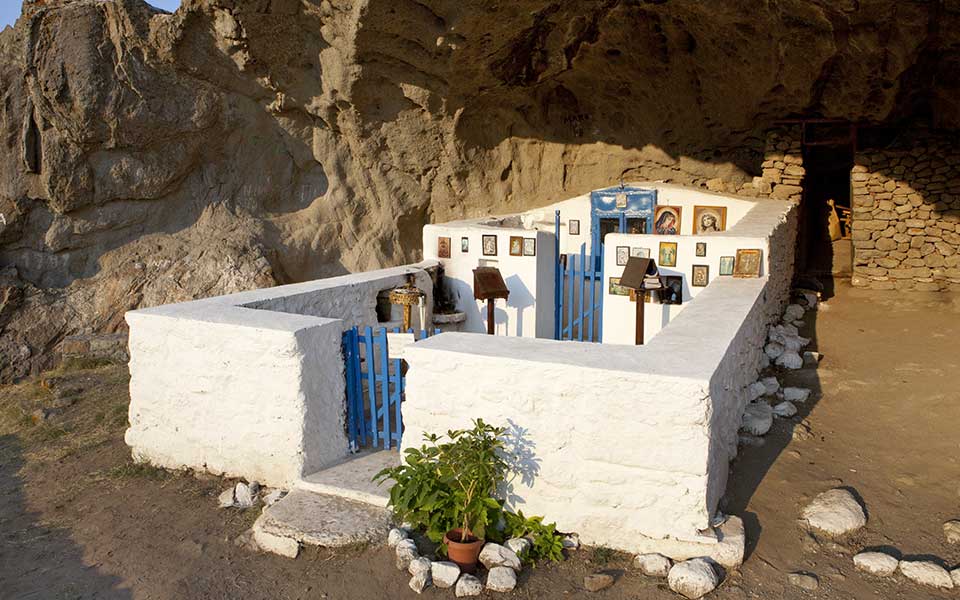
Panaghia Kakaviotissa, Limnos
© Shutterstock
Panaghia Kakaviotissa has something that makes it stand out completely: It is a “roofless” church, quite literally, as its ceiling is the top of the cave in which it is nestled, in a crag on Mt Kakavos, 4 kilometers from Myrina, the capital of the northeastern Aegean island of Limnos. The church dates back at least to 1305, when it became a branch of the Great Lavra Monastery of Mt Athos.
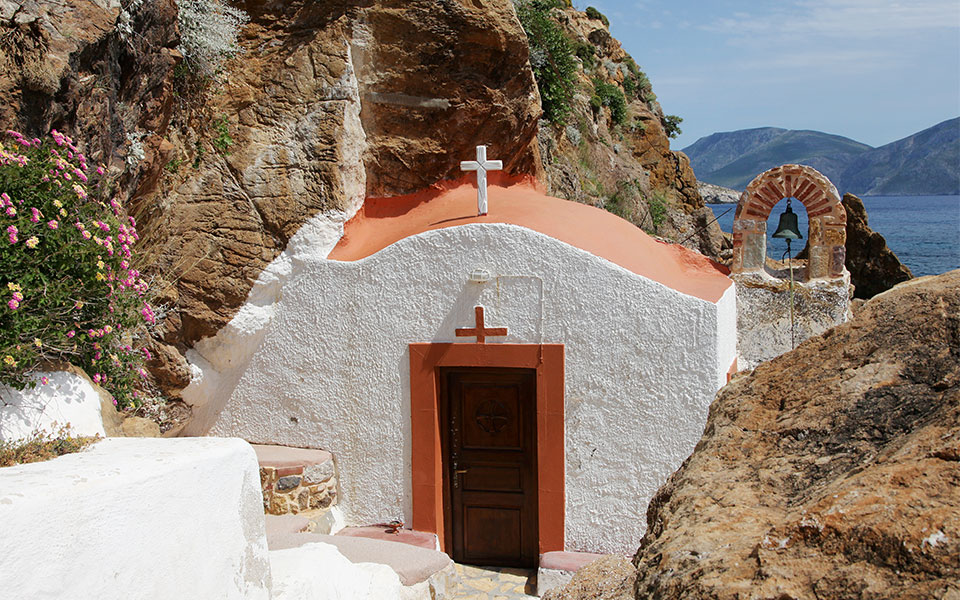
Panaghia Kavouradena, Leros
© Shutterstock
According to local lore, the church is named after an icon of the Virgin Mary that was found clutched in the claw of a crab (“kavouras” in Greek) by a fisherman exploring an opening on a rocky part of the coast. That opening then became the location of the charming church that was built for the icon and given a name that would ensure that the tale of its discovery would be passed on.
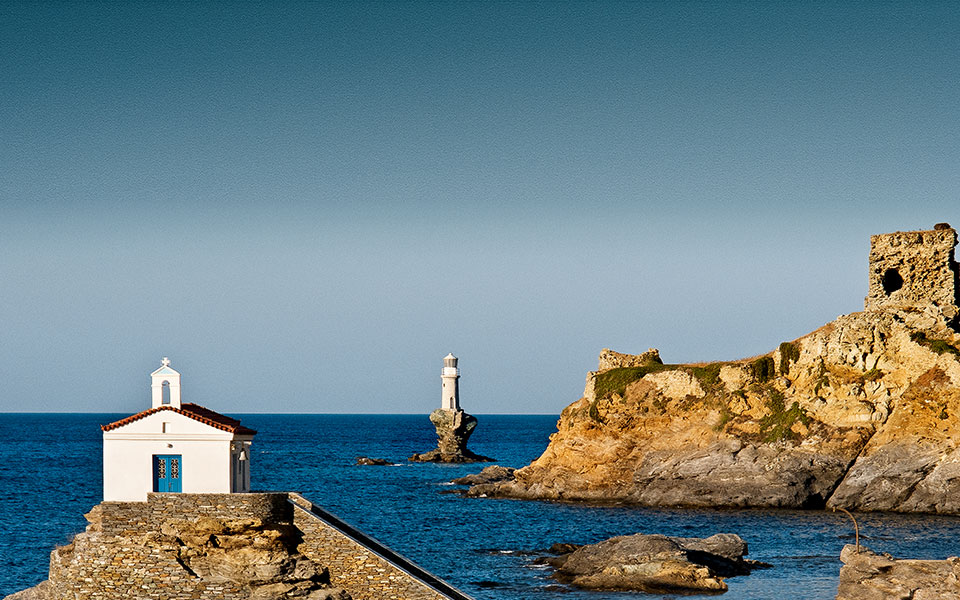
Panaghia Thalassini, Andros
© Giannis Giannelos
History, tradition and faith are encompassed by the Church of Panaghia Thalassini, or Our Lady of the Sea, which, perched on a rock overlooking the water, welcomes travelers to the port of the Cycladic island of Andros. The church is also named after an icon, which was said to have been washed up by the sea and discovered by locals on a bed of seaweed in a nearby cave. Carried to a church for safekeeping, the icon kept returning to the spot where it was discovered, this conveying the Virgin’s desire to have her own church erected there.

Panaghia Hozoviotissa, Amorgos
© Shutterstock
The location of the Church of Panaghia Hozoviotissa on the southern Aegean island of Amorgos is awe-inspiring for several reasons. First, it is impossible to see it from dry land as its façade is completely embedded into the rock face and visible only from the sea. Second, because it is the only dash of sparkling white on the otherwise stark and barren grey rock. And last but not least, there’s the fact that it’s not just a church but a fully functioning monastery, a place for prayer and reflection. It is absolutely worth a visit.
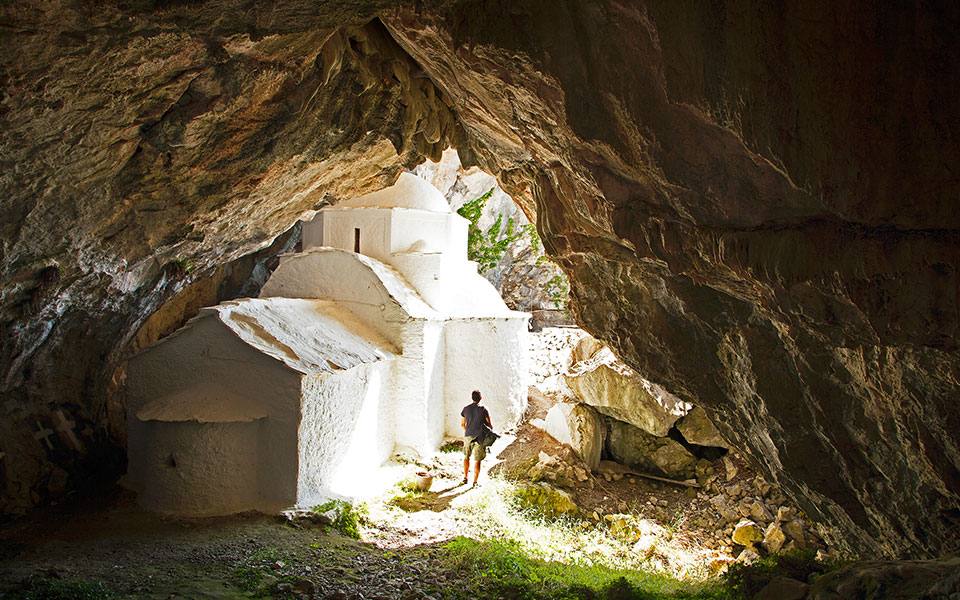
Panaghia Makrini, Samos
© Olga Charami
The Church of Panaghia Makrini (or Faraway Lady) is named after the fact that it is wedged in a remote cave on Mt Kerki in western Samos. Its history is defined by three distinct chapters, starting with its founding in the late Byzantine period, as evidenced by its wonderful collection of 14th-century icons. The vestibule (pronaos) was added later, on 16 August 1764, a sign tells us, while the third, present, period is marked by its popularity among visitors to the eastern Aegean island, who come to admire its picturesque simplicity.
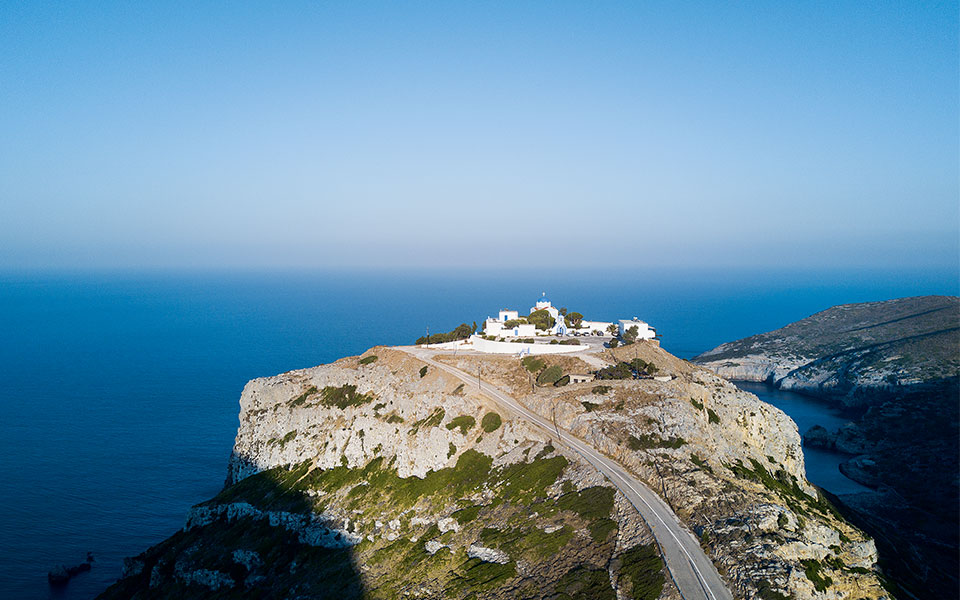
Panaghia Kastriani, Kea
© Marika Tsouderou
In 1710 a local shepherd in Kastri found a miraculous icon of the Virgin on a seaside hill, prompting the god-fearing islanders to build a church on the sheer rock and name it Panaghia Kastriani, or Our Lady of Kastri. The mother of Christ also became their protector, who they still take appeal to when times get tough. With its majestic view over the Aegean, this evocative church is a favorite for special events like weddings and baptisms.
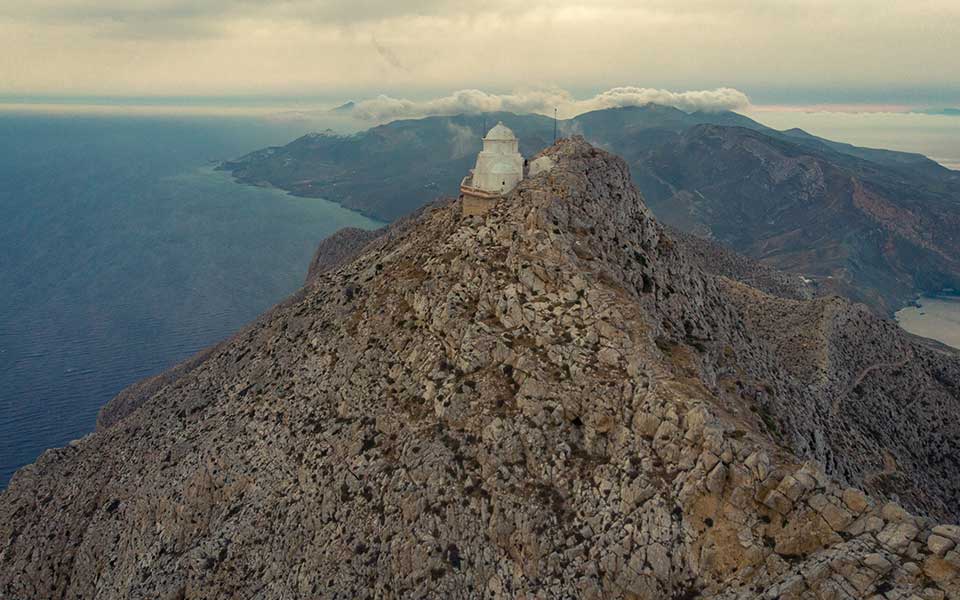
Panaghia Kalamiotissa, Anafi
© Shutterstock
Panaghia Kalamiotissa, which is also known as the Zoodochou Pigis Monastery, is perched atop the promontory of Kalamos, which is connected to the rest of Anafi by a narrow stretch of land. The location is so striking that even the ancients had singled it out for a temple dedicated to the god Apollo. Many ruins from that temple were, in fact, used to build this beautiful church in the late 19th century.
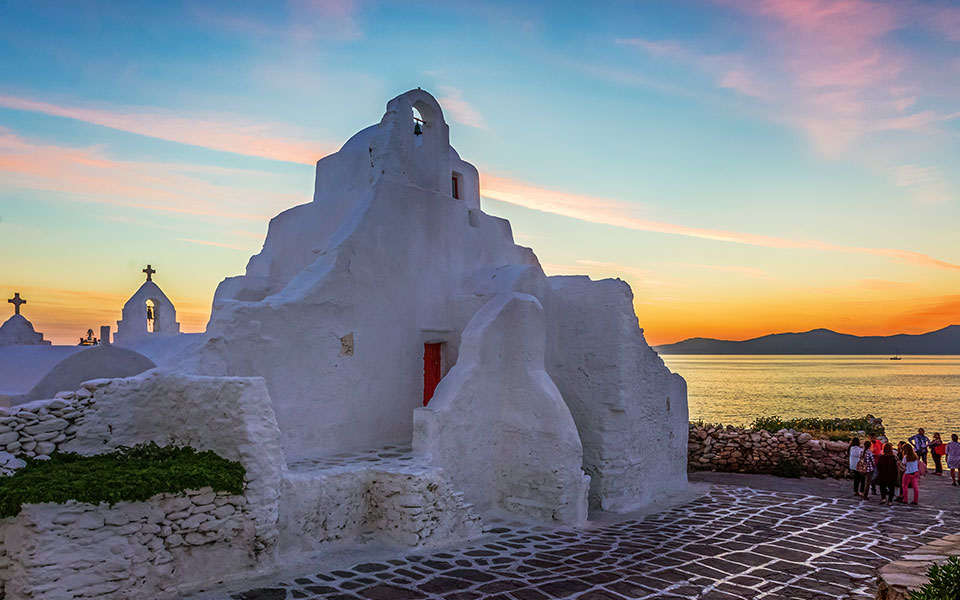
Paraportiani, Mykonos
© Perikles Merakos
Mykonos has so much that is unique and wonderful, including its greatest church, Paraportiani, which stands out for its architecture and religious significance. It was named for the fact that it is located right beside the old castle’s paraporti, or side door, and is actually an amalgamation of five churches, four of which – Aghioi Anargyroi, Aghia Anastasia, Aghios Sozon and Aghios Efstathios – form the base and are crowned by Panaghia Paraportiani, like a dome on top.
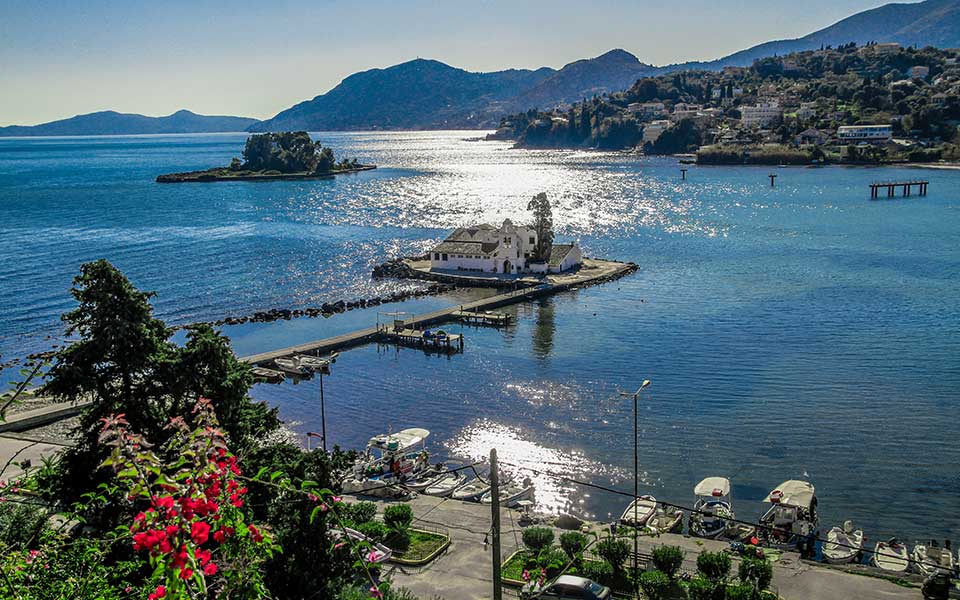
Panaghia Vlachernon, Corfu
© Shutterstock
In the area of Kanoni, there’s a narrow strip of land leading to a tiny outcrop and Panaghia Vlachernon, a 17th-century church that is intensely Byzantine in style and color – composing a marvelous tableau. The scene is made even more perfect by a short sail in a caique to the emerald islet close by. It is a tiny island – hence its nickname, Pontikonissi or Mouse Island – covered almost in its entirely by the 13th-century Church of the Panatokrator, or Almighty.
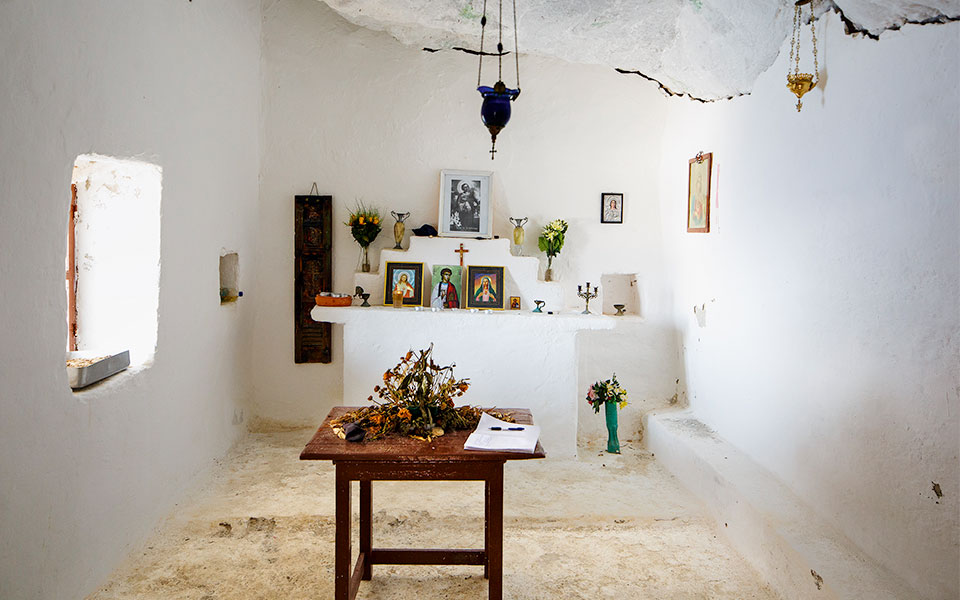
Aghios Stefanos, Syros
© Visual Hellas
Aghios Stefanos is a Catholic church located in a cave just above Galissa. Only the walls are man-made, as the cave forms both the church’s floor and ceiling. According to the lore, the church was named after the man who built it, a fisherman named Stefanos, who was saved by his namesake saint from the clutches of a giant octopus which was trying to drag him into the sea.
The signature dish of the island...
A magical open-air cinema in Kimolos...
This spring, five majestic peaks across...
The charming port city of Volos...